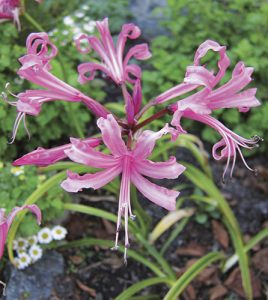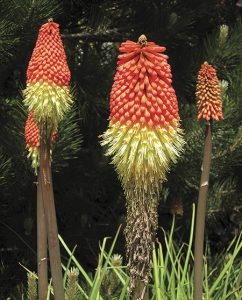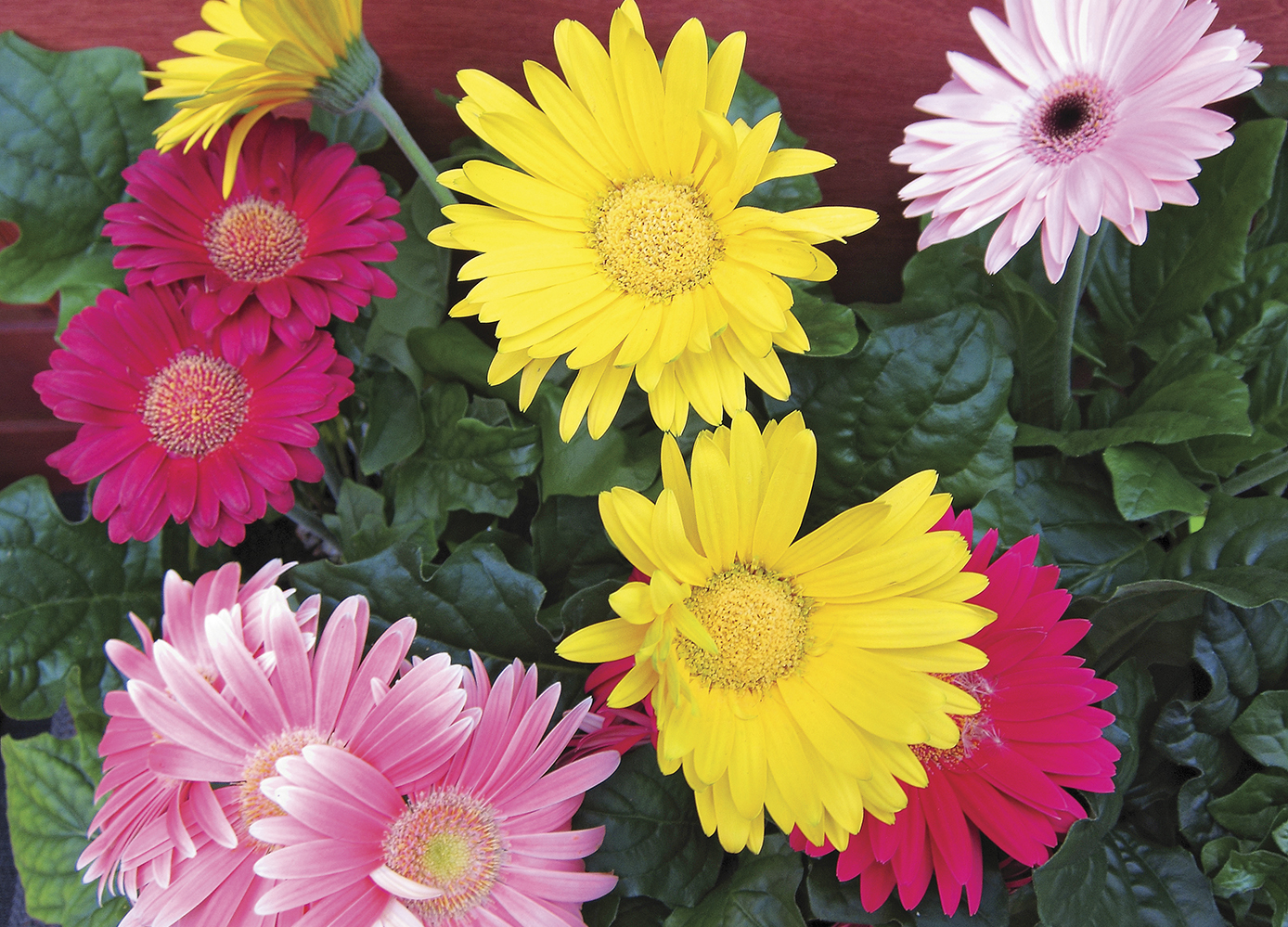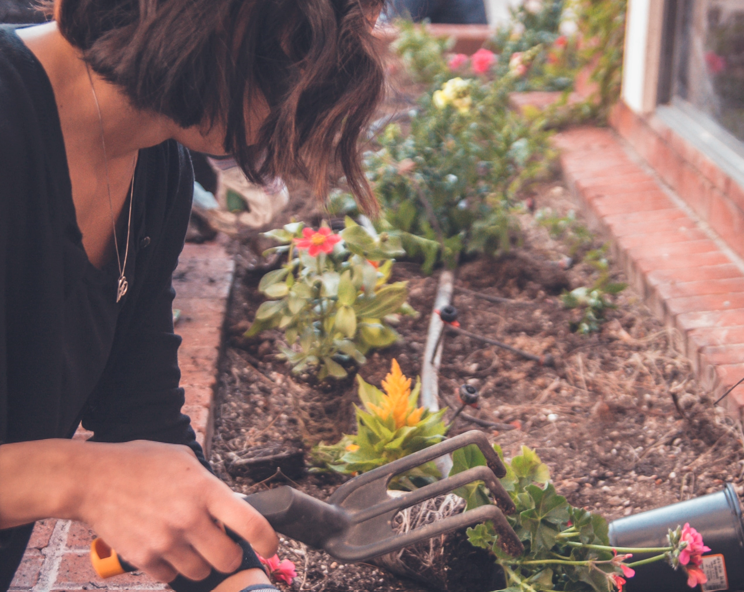(South Africa, to be precise)
By Carol Hall
While Africa is perhaps not the first place that comes to mind as a source of garden-worthy plants for Canada, our summer gardens just wouldn’t be the same without the many familiar plants that originated in that vast and varied continent.
Take the indispensable bedding plants everybody calls geraniums. (Oddly, they belong to the genus Pelargonium, not to Geranium, a different genus of plants.) Zonal or “window box” geraniums, ivy geraniums, and showy or regal geraniums are all native to Africa. So is the impatiens, or Busy Lizzie (Impatiens walleriana), which loves shade and needs moisture, as is Livingstone daisy or ice plant (Mesembryanthemum criniflorum), which loves sun and is very drought tolerant. So are several other familiar plants, including gladioli (Gladiolus hybrids) and calla lilies (Zantedeschia hybrids).
It would take a whole book to give an overview of all the ornamental African plants, familiar or not. Here are just a few excellent choices from one place in particular: South Africa.
As you might expect, all need lots of light and warm fertile soil, as well as excellent drainage, and unless stated otherwise are best treated as annuals in our climate.
One caution: since the many different common names of some African plants can be confusing, it’s best to look for them by their Latin genus name.
“Daisies” Galore
Two popular frost-tender South African perennials make excellent cut flowers; they can also be overwintered indoors in good light. Gazania hybrids (treasure flower, African daisy) feature large flowers with pointed petals that are usually striped yellow and orange with contrasting centres. Pink, white, and red hybrids are also available. The flowers of Gerbera hybrids (Transvaal daisy, African daisy) are also very large, with even larger centres, and come in many shades, both bright and pastel.
Osteospermum hybrids (Cape daisy) are fascinating knee-high tender perennials that bloom all summer in sun or part shade with 5 cm (2 in.) flowers of purple, pink, white, yellow, orange, or bicolours, all with startling blue centres surrounded by tiny yellow anthers. Some have unique spoon-shaped petals that make them look almost alien.
Bulbs Indoors and Out
Bulbs are naturally equipped to cope with South Africa’s prolonged dry season: they simply go dormant, emerging to bloom every year with the seasonal rains. They can be planted outdoors in the spring and treated as annuals or kept indefinitely as houseplants by planting indoors in early fall. Keep the pots in a cool place and water sparingly until signs of growth appear in late winter, and then gradually give them more warmth, light, and water. When the showy blooms fade after many weeks, let the pots dry out until the following fall. The process can then be repeated.
Good candidates to try include Clivia miniata (Natal lily), with strappy green leaves and bright reddish-orange flowers; Eucomis autumnalis (pineapple lily), whose tiny greenish-yellow flowers with their topknot of foliage look exactly like small pineapples; and Haemanthus coccineus (blood lily), whose large blood-red petals surrounding showy yellow stamens appear on tall stems before the foliage emerges.
Freesia hybrids are in a class by themselves for their deliciously sweet fragrance and range of bright, clear colours. Being corms (like Gladiolus and Crocosmia), individual bulbs will not bloom again, but they produce offset corms that can be saved. Indoors, keep freesias in a warm place until they start blooming, and then move them to a cooler location in bright light. For outdoor summer blooms, plant the corms in spring after the soil warms. Indoors or out, the lax stems will need some support.

Cape flower.
Strong, taller-growing South African corms to plant outdoors for summer colour are Ixia maculata (African corn lily) and Sparaxis tricolor (Harlequin flower). Inexpensive to replace every year and very easy to grow in full sun, both somewhat resemble gladioli in form. Ixia thrive in hot dry sites, and sparaxis flowers are especially colourful with their large contrasting centres.
The autumn-flowering bulbs Nerine bowdenii (Cape flower) and Amaryllis belladonna (belladonna lily) are both breathtakingly beautiful when their large bright-pink flowers appear in early fall without foliage, giving them the nickname “naked ladies.” Though hardy on the West Coast, their dislike of wet winters means they’re best grown in containers everywhere in Canada. Plant the bulbs in spring and keep the pots in a very sunny, hot site all summer, watering them only sparingly. After the blooms and foliage fade, bring them indoors and keep them in a cool, dry place until the following spring.
Summer Gardens and Beyond
Two borderline hardy perennials from South Africa make spectacular additions to Canadian summer gardens in sun to part shade, growing very quickly from nursery plants purchased in spring. The huge blue-green leaves of Melianthus major (giant honey flower, honey bush) are set off perfectly by its small bright-red flowers, while Phygelius capensis (called Cape fuchsia, although it’s completely unrelated to the genus Fuchsia) features unique tubular flowers of orange-red that bloom all summer. Fully hardy on the West Coast, it can be grown in containers in colder climates.

Red hot poker.
A few South African perennials are reasonably cold-hardy (to -29°C, or -20°F). One is medium-sized Ceratostigma plumbaginoides (blue leadwort), whose small sapphire-blue flowers that appear in late summer stand out against foliage that turns red in fall. Another is Kniphofia uvaria (red hot poker, torch lily), whose large clumps of sword-shaped leaves are topped by tall spikes of bottle-brush flowers, yellow on the bottom and red on the top. Many smaller-growing Kniphofia hybrids with varying flower colours are also available.
Even some South African bulbs are hardy to -29°C. Knee-high Gladiolus nanus (miniature gladioli) are even more colourful than their taller relatives, with their contrasting petal markings, and Crocosmia species and hybrids feature tall sword-shaped leaves topped with graceful sprays of long-blooming bright flowers. Neither needs lifting (or staking) and both will bloom in place year after year.
Photos: Carol Hall.






